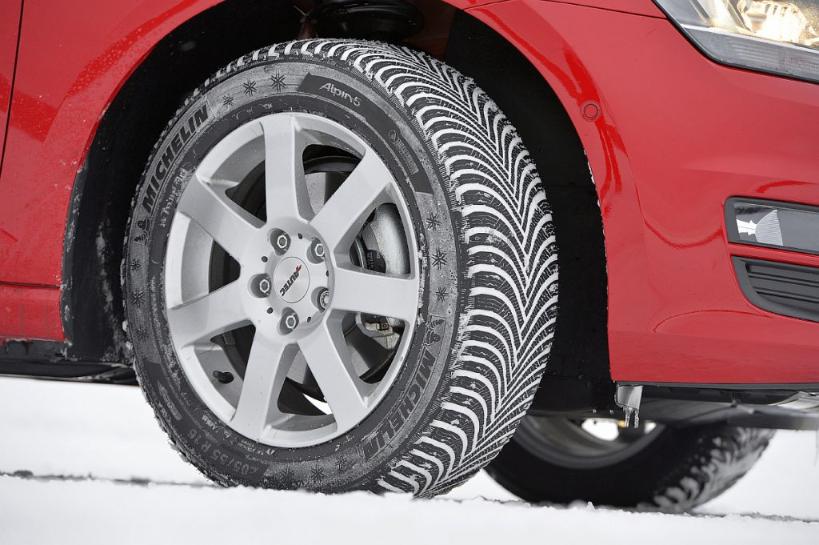
TEST OF THE BEST 4 SEASONS TIRES 2019
The change of winter tires and summer tires: a galley that we would like to do without! The 4 season tires can perhaps meet your expectations. Which model to choose for a high-performance tire both in summer and in winter? The brands are numerous and are not all equal. The German reference magazine AutoBild has tested the Best all-season tires for the year 2019. Discover the results, sometimes surprising!
THE TEST BY AUTOBILD
THE BEST 4 SEASONS TIRES
1 - Goodyear Vector 4 Seasons Gen-2
Goodyear is a world famous tire manufacturer. The Vecto 4 Seasons Gen-2 is an all-season model designed to adapt to both summer and winter weather conditions. With its three-part SmartRED technology, the contact of your wheels on the ground is optimal. Indeed, by choosing a wider tread than its predecessor, its engineers were able to draw better slats with protruding ends on the edges of the tire. This has the effect of providing excellent grip on icy roads .
Its V-TRED profile also improves outward water evacuation and limits aquaplaning, giving it "class B" wet grip performance. In terms of energy efficiency and acoustic performance, the Goodyear Vector 4 Seasons Gen-2 is in class C with low rolling resistance.

2 - Continental All Season Contact
The All Season Contact XL from Continental is an excellent choice for the best performance on wet , snow or ice . Engineers have revised the tread and the tire itself to provide excellent traction and effective braking.
The presence of high-grade resins and silica in the tire gives All Season Contact more flexibility in all types of soil . In this way, the performances are kept in summer as well as in winter. In addition, during heavy rains, the rigid tread combined with open shoulders maximizes the risk of aquaplaning and at the same time ensures more maneuverability when cornering.
3 - Nokian Weatherproof
The Nokian Weatherproof is in class C in terms of fuel economy. As for noise, it produces only 69 dB. The Finnish tire brand has therefore succeeded in this model a feat combining the efficiency of a winter tire and the performance of a summer tire .
The 3PMSF logo indicates that it can be used in winter, on snowy ground. Adhesion also performs well on wet surfaces thanks to the V profile optimizing water evacuation, which avoids aquaplaning phenomena . In addition, braking and maneuverability are improved.
4 - Michelin CrossClimate +
In terms of tires, Michelin is a brand that stands out. Its CrossClimate + is no exception for road grip in summer and winter. This 4 seasons tire is a concentrate of technologies that offers the best performance on wet and snowy ground.
The tread is made of innovative material ensuring excellent grip in all weather conditions. The V-shaped tread design optimizes not only safer driving on snowy roads, but also brakes on wet roads.

High-end French automobile: the French exception
Our prestige cars, which carry the ministers of the Republic, continue to play the card of modesty.
The Rétromobile show reminds us every year that the brands that have disappeared today - Bugatti, Delage, Delahaye, Talbot - were, before the war, the country's honor. Dressed in bodywork that were both sporting, elegant and flamboyant, they dominated the luxury car market. They embodied the golden age of French bodywork.
In the aftermath of the Second World War, these prestigious brands disappeared one after the other, and the generalist manufacturers were unable to take over, lack of ambition, perhaps know-how and opportunities in major international markets . The first oil shock of 1973 shaped a new generation of vehicles in this category, which are still available today.
At each motor show, we scrutinize the slightest sign of rebirth of the high-end tri-color. Each time, hopes are disappointed. Are the French manufacturers definitely confined to producing small and medium cars? Would a curse hover over this industry that made our grandparents proud?
A very hexagonal vision of the automobile, combined with a confiscatory tax for the high-end (the auto sticker then the bonus-malus), and a creeping autophobia have finally out our automotive flags radar screens. It was then the descent into hell, with a decline in standing illustrated by the preeminence of diesel and the disappearance of large gasoline engines. The V8 projects finally amputated two cylinders have lowered the lifestyle of these models.
A paradox: our country is world leader in luxury goods and its car production does not cross the middle range.
Never replaced, the major road Citroën C6, Peugeot 607 and Renault Vel Satis were the last representatives of a certain idea of French luxury. They did not know the career they deserved following a succession of blunders. No offense to their designers, the Peugeot 508 and Renault Talisman , which now oversee their respective ranges, evolve a lower echelon. The standing barely exceeds the bar of 200 horses. While German models continue to line up an impressive cavalry sent to the rear wheels or four wheels, the French transmit power to the front wheels. A difference in size.
A question of durability
This architectural choice confines French cars to a certain modesty and deprives them of a higher status. As for DS, Citroën's premium model label which has become a full-fledged brand of the PSA group, everything remains to be written. To have some chances of success, the challenge DS should not drag on the way to deliver a new model definitely meet the codes of the high-end in terms of design as performance and technological innovations. Because that's where the problem lies.